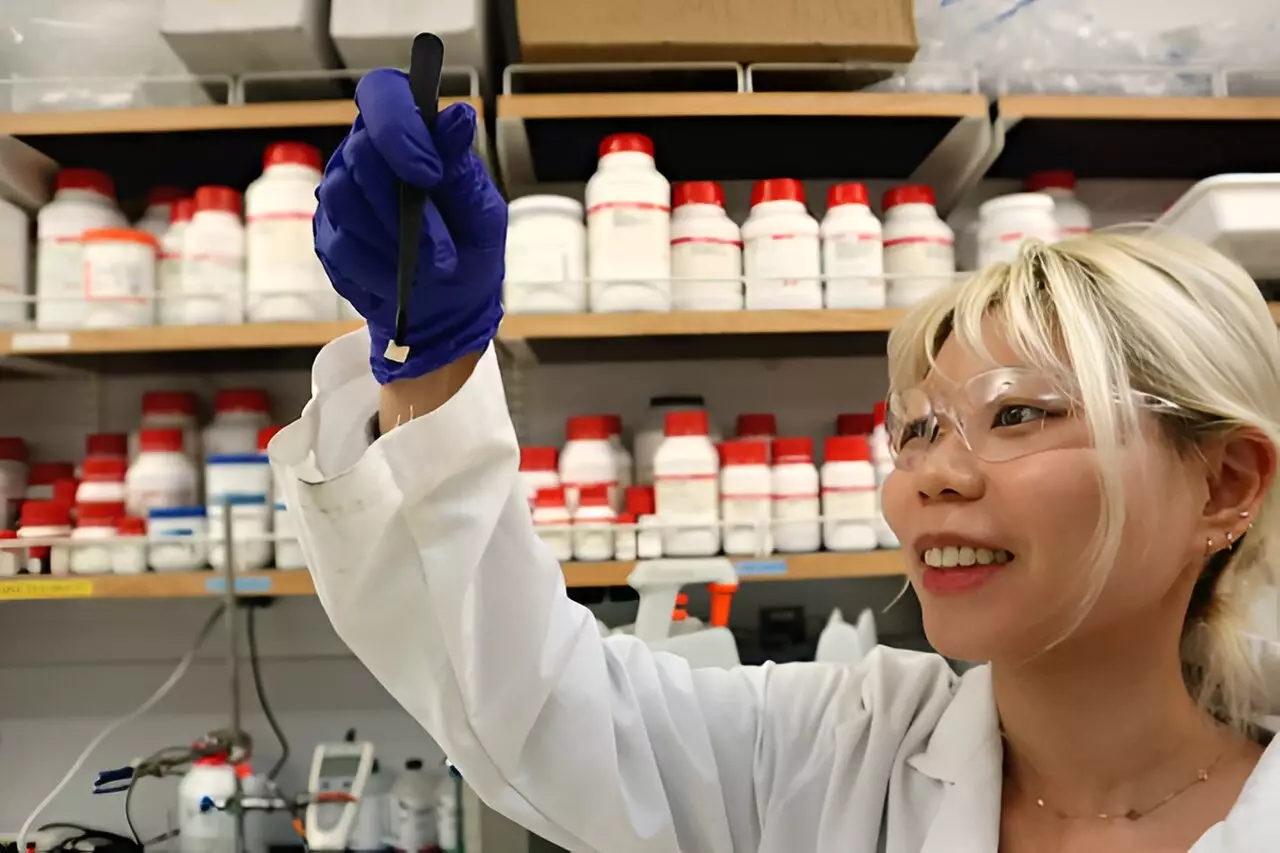In the field of surgical applications, traditional medical adhesives have often posed significant challenges due to their limited bio-absorbability, high toxicity, and lack of customizability. These limitations have resulted in suboptimal surgical outcomes. However, recent advancements in synthetic biology offer a promising alternative. Researchers, led by Fuzhong Zhang, professor of energy, environmental & chemical engineering at Washington University in St. Louis, have developed a new class of hydrogels constructed entirely from proteins. This breakthrough paves the way for the development of tailored, biocompatible, and biodegradable adhesives for specific internal biomedical applications, such as tissue repair and surgical glues.
Zhang’s team, consisting of Marcus Foston, Guy Genin, and Mohamed A. Zayed, aimed to address the limitations of traditional synthetic bio-glues. Their novel hydrogels, made of artificially designed proteins that have never been created before, possess a remarkable combination of advantageous properties. These properties include exceptional mechanical strength, underwater adhesive properties, bio-absorbability, and suitability for tissue repair and engineering applications.
The development of these new hydrogels builds on previous breakthroughs in Zhang’s lab. Inspired by the adhesive properties of aquatic mussels and their sticky mussel foot proteins, the team combined silk-amyloid peptides and mussel foot proteins (Mfp) to create silk-amyloid-mussel foot protein (SAM) hydrogels. Through meticulous experimentation, Juya Jeon, a graduate student in Zhang’s lab and the first author of the study, carefully adjusted the proportions of the two main ingredients to create SAM hydrogels with unique combinations of biocompatibility, bio-absorbability, strength, stretchability, and underwater adhesion to biological surfaces.
One of the key aspects of this research was the exploration of the intricate relationships between protein sequence and hydrogel properties. Jeon’s work has laid the foundation for designing SAM hydrogels with tailored characteristics suitable for personalized medical repair applications. By varying the combinations of silk-amyloid and Mfps, the team uncovered complex relationships between material structure and properties. They discovered that an increase in silk-amyloid repeats significantly enhanced cohesive strength and toughness, while longer Mfp length led to improved surface adhesion but reduced overall strength. Notably, one variant displayed exceptional strength, strain resistance, and underwater adhesivity when tested on a preclinical model.
These findings provide invaluable insights into the design and development of protein adhesives with tunable properties. Zhang emphasizes that the sequence-structure-property relationships uncovered in this study mark a significant leap forward in the pursuit of safer and more effective surgical adhesives. This breakthrough opens doors to a new era of personalized bio-glues, allowing for the development of customized adhesives tailored to specific medical needs.
The advancements in synthetic biology, particularly the development of hydrogels constructed entirely from proteins, hold immense potential for revolutionizing the field of surgical adhesives. The research conducted by Zhang’s team, with the novel SAM hydrogels, demonstrates the power of synthetic biology in creating biocompatible, biodegradable, and customizable adhesives. With precise control over mechanical and adhesive properties, these hydrogels offer a significant improvement over traditional medical adhesives. This breakthrough paves the way for safer, more effective surgical procedures and provides hope for enhanced patient outcomes in the future.


Leave a Reply